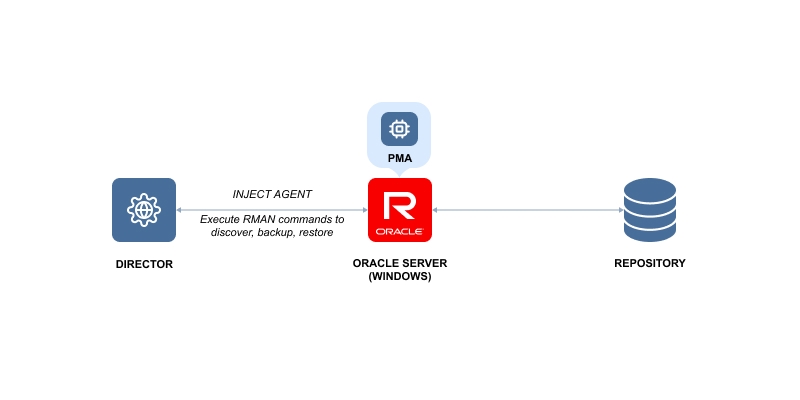Oracle Database Backup
With NAKIVO Backup & Replication and the help of the Oracle Recovery Manager (RMAN), you can successfully protect your Oracle databases via Physical machine agent-based approach for Windows and via SSH for Linux. The product uses an agent to run scripts/execute RMAN commands for backup and recovery operations. To start the backup process, you need to pre-configure specific settings in the RMAN configuration and then add your Oracle database to the product Inventory. Using Dashboard, you can create Oracle backup jobs and recover entire databases to the destination pre-configured in RMAN.
How Backup and Recovery for Oracle Database with RMAN Works
With Oracle Recovery Manager (RMAN), you can simplify performing backup and recovery tasks on your Oracle databases and automate the process of managing your backup strategies. A copy of the RMAN executable is automatically installed with the database. Depending on the output format of the backup, it may be a backup set, a proxy copy, or an image copy. Database copies are not considered backups, but rather copies of the database's log files.
To back up your data with RMAN, you need the minimum set of the following components defined within your RMAN environment:
-
Target database: The primary Oracle database on which RMAN performs backup and recovery operations. The metadata about RMAN operations on a database is kept in the database control file and is known as the RMAN repository. Before you can start with RMAN connect to a target database. Refer to Starting RMAN and Connecting to a Database: Quick Start to learn how to do it.
-
RMAN client: The client application that manages backup and recovery operations for a target database. The RMAN client can use Oracle Net to connect to a target database, so it can be located on any host that is connected to the target host through Oracle Net. Refer to Starting and Interacting with the RMAN Client for details about how to work with the RMAN client.
Note
RMAN client itself doesn't execute backup, restore, or recovery operations. Upon connecting the RMAN client to a target database, RMAN assigns server sessions within the target instance to execute these operations; the interpretation of a "session" varies based on the operating system being used.
For instance, in UNIX environments, a server session aligns with a server process, whereas in Windows systems, it corresponds to a thread within the database service. To communicate with the target database and recovery catalog, the RMAN client utilizes internal, unlisted PL/SQL packages.
To start using this feature with NAKIVO Backup & Replication, take the following steps:
